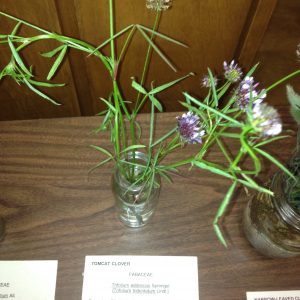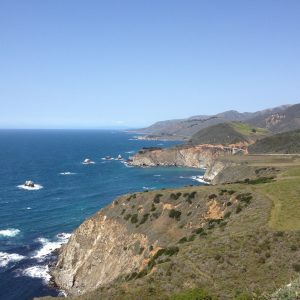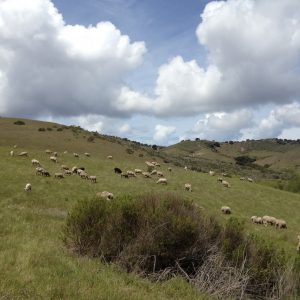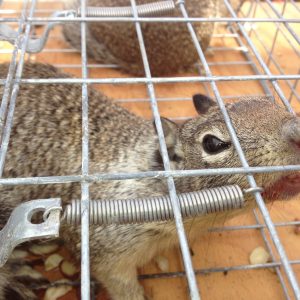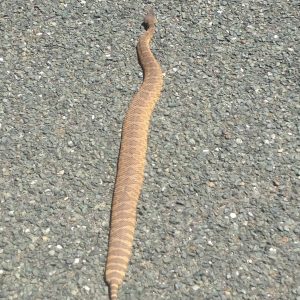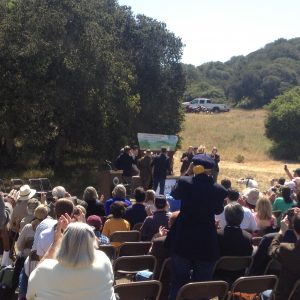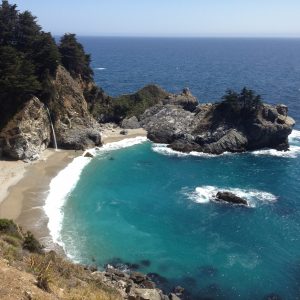- Trifolium wildenovii, Tomcat Clover
- Secretary
- Secretary Salazar giving a speech at the dedication of Fort Ord National Monument
I have been living here in Monterey for about two months now and it is only getting better. I work on Fort Ord National Monument (the newest national monument in the United States. Recently we had a ceremony for the national monuments depute. At this event we had some great guests which included U.S. Department of Interior Secretary Ken Salazar, U.S. Rep. Sam Farr, Garrison Commander Col. Joel J. Clark, Department of the Interior Deputy Secretary David Hayes, White House Council on Environmental Quality Chair Nancy Sutley, and Bureau of Land Management Director Bob Abby.
President Obama made Fort Ord a National monument on April 20, 2012, “Fort Ord’s dramatic landscape lives in the memories of thousands of veterans as their first taste of Army life, as a final stop before deploying to war, or as a home base during their military career,” Obama said.
Fort Ord was an old military base from World War 1 through Desert Storm and now is home to beautiful trails and wildlife neighboring the Monterey Peninsula. I am very fortunate to be working here and hope to stay here as long as possible.
On another note I have been collecting many species a week for Seeds of Success for example Tomcat Clover scientific name Trifolium wildenovii. It has been quite the scavenger hunt trying to find all the species on my list my mentor and I have created.
Another project I have been doing is keeping signs posted and up to date with the location of a sheep herd on the Fort Ord, so that people with dogs understand the dangers of having your dog off lease around these natural landscapers. This last Saturday at the public lands day site on Fort Ord we held the first annual “Sheep Appreciation Day”, where people could come out and watch the sheep dogs and herders doing demonstrations, some other herders sheering sheep, and people knitting a blanket from the sheep wool.
I am having a great time here and can’t wait for the next project to come about!

